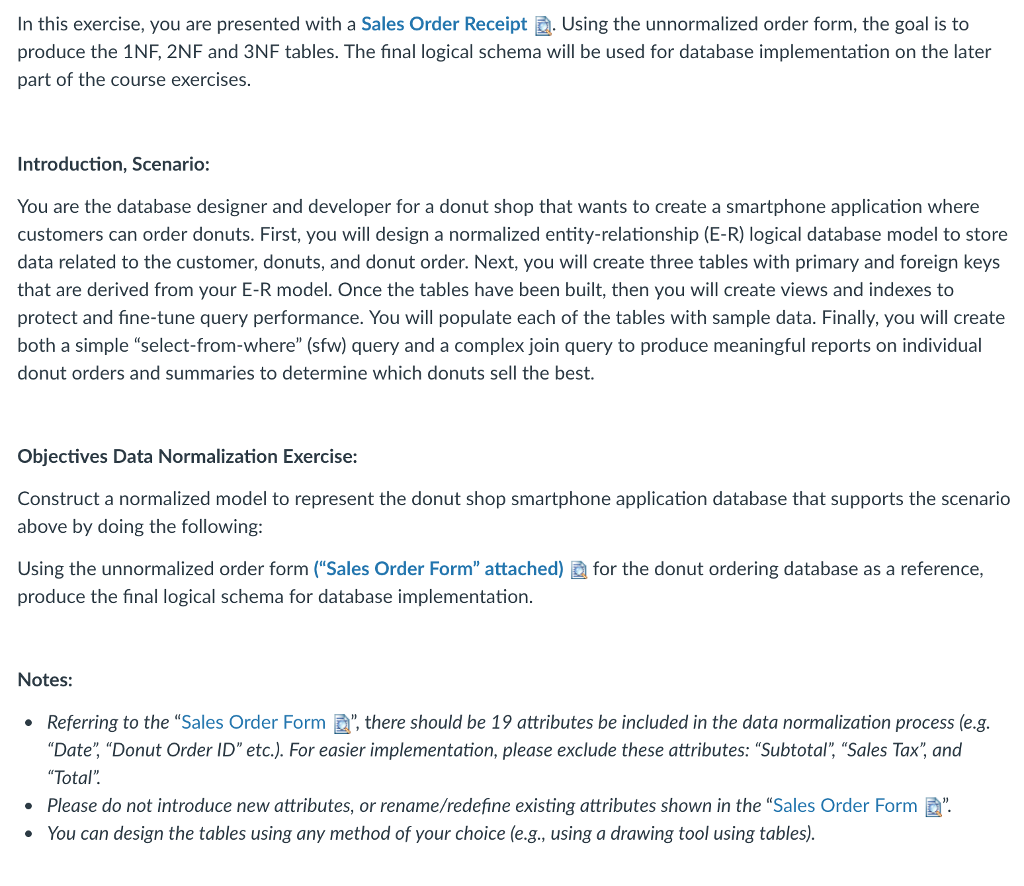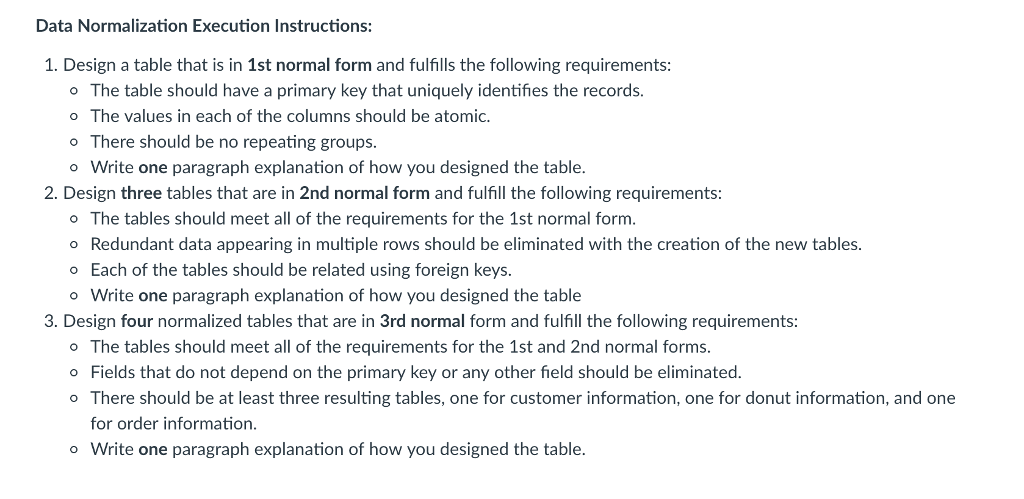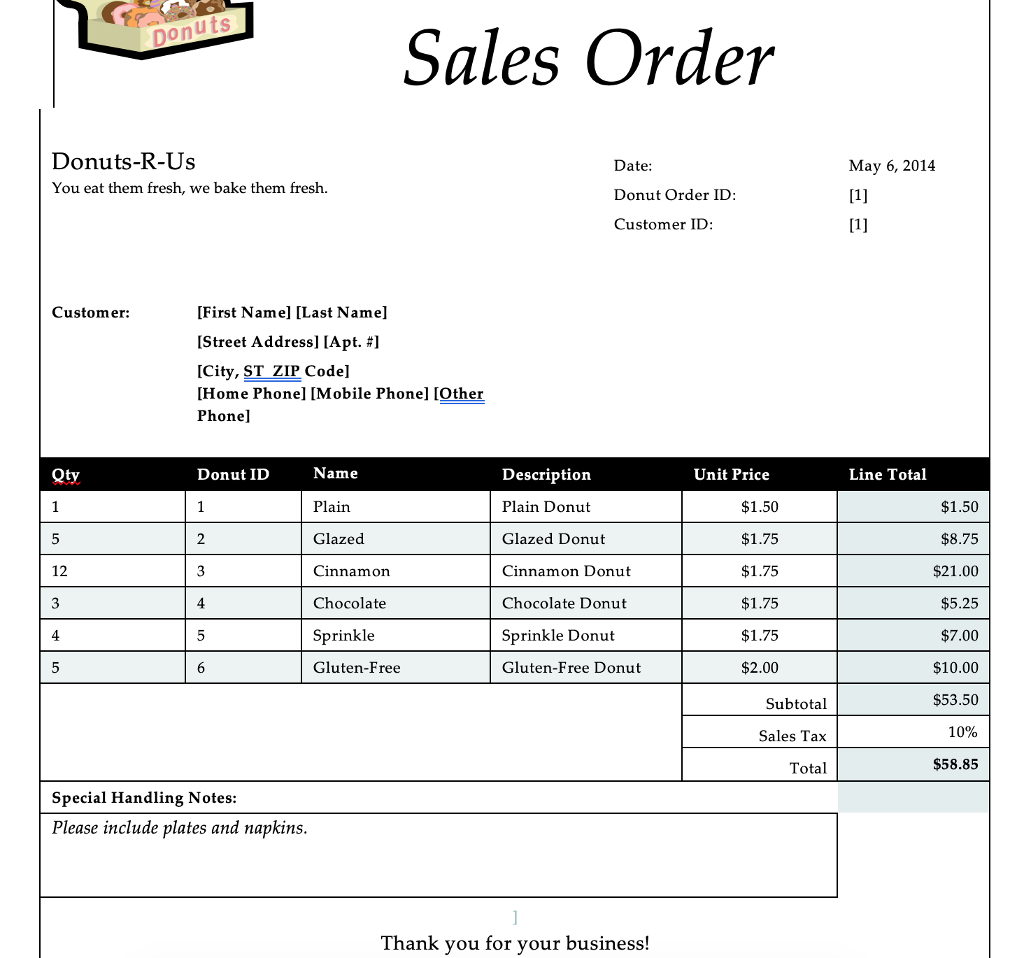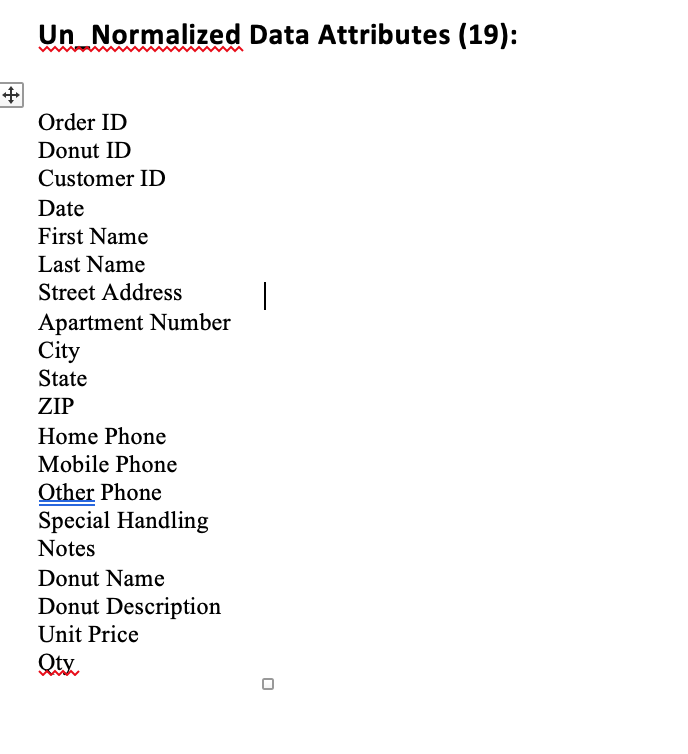



In this exercise, you are presented with a Sales Order Receipt . Using the unnormalized order form, the goal is to produce the 1NF, 2NF and 3NF tables. The final logical schema will be used for database implementation on the later part of the course exercises. Introduction, Scenario: You are the database designer and developer for a donut shop that wants to create a smartphone application where customers can order donuts. First, you will design a normalized entity-relationship (E-R) logical database model to store data related to the customer, donuts, and donut order. Next, you will create three tables with primary and foreign keys that are derived from your E-R model. Once the tables have been built, then you will create views and indexes to protect and fine-tune query performance. You will populate each of the tables with sample data. Finally, you will create both a simple "select-from-where" (sfw) query and a complex join query to produce meaningful reports on individual donut orders and summaries to determine which donuts sell the best Objectives Data Normalization Exercise: Construct a normalized model to represent the donut shop smartphone application database that supports the scenario above by doing the following: Using the unnormalized order form ("Sales Order Form" attached) produce the final logical schema for database implementation. for the donut ordering database as a reference, Notes: Referring to the "Sales Order Form there should be 19 attributes be included in the data normalization process (e.g. Date', "Donut Order ID" etc.). For easier implementation, please exclude these attributes: "Subtotal', "Sales Tax', and "Total". Please do not introduce new attributes, or rename/redefine existing attributes shown in the "Sales Order Form . You can design the tables using any method of your choice (e.g., using a drawing tool using tables) In this exercise, you are presented with a Sales Order Receipt . Using the unnormalized order form, the goal is to produce the 1NF, 2NF and 3NF tables. The final logical schema will be used for database implementation on the later part of the course exercises. Introduction, Scenario: You are the database designer and developer for a donut shop that wants to create a smartphone application where customers can order donuts. First, you will design a normalized entity-relationship (E-R) logical database model to store data related to the customer, donuts, and donut order. Next, you will create three tables with primary and foreign keys that are derived from your E-R model. Once the tables have been built, then you will create views and indexes to protect and fine-tune query performance. You will populate each of the tables with sample data. Finally, you will create both a simple "select-from-where" (sfw) query and a complex join query to produce meaningful reports on individual donut orders and summaries to determine which donuts sell the best Objectives Data Normalization Exercise: Construct a normalized model to represent the donut shop smartphone application database that supports the scenario above by doing the following: Using the unnormalized order form ("Sales Order Form" attached) produce the final logical schema for database implementation. for the donut ordering database as a reference, Notes: Referring to the "Sales Order Form there should be 19 attributes be included in the data normalization process (e.g. Date', "Donut Order ID" etc.). For easier implementation, please exclude these attributes: "Subtotal', "Sales Tax', and "Total". Please do not introduce new attributes, or rename/redefine existing attributes shown in the "Sales Order Form . You can design the tables using any method of your choice (e.g., using a drawing tool using tables)










